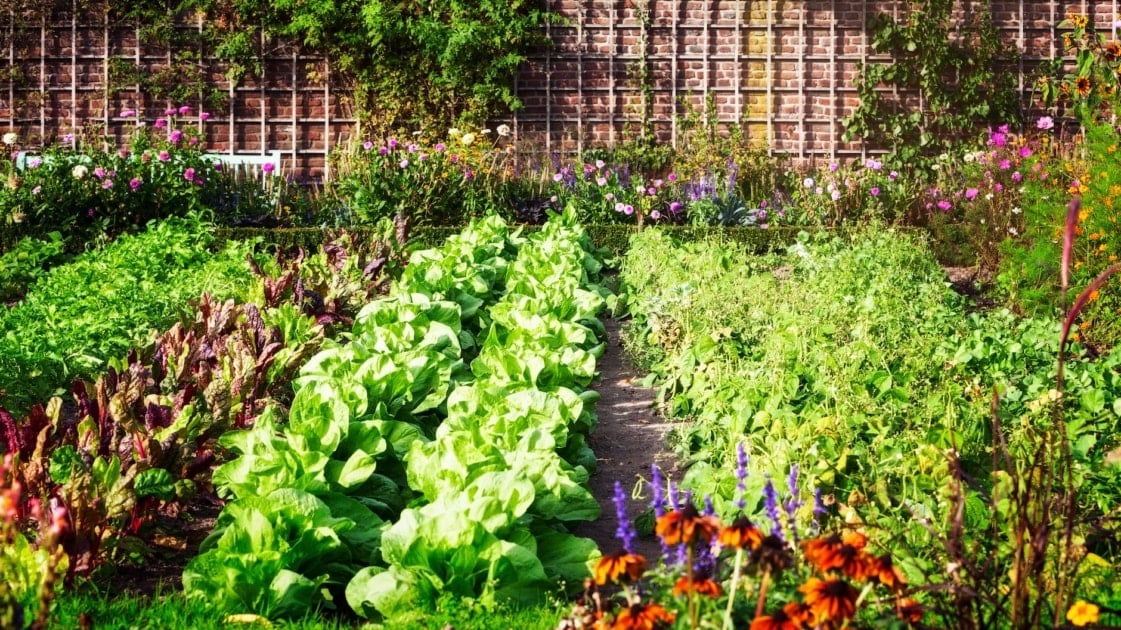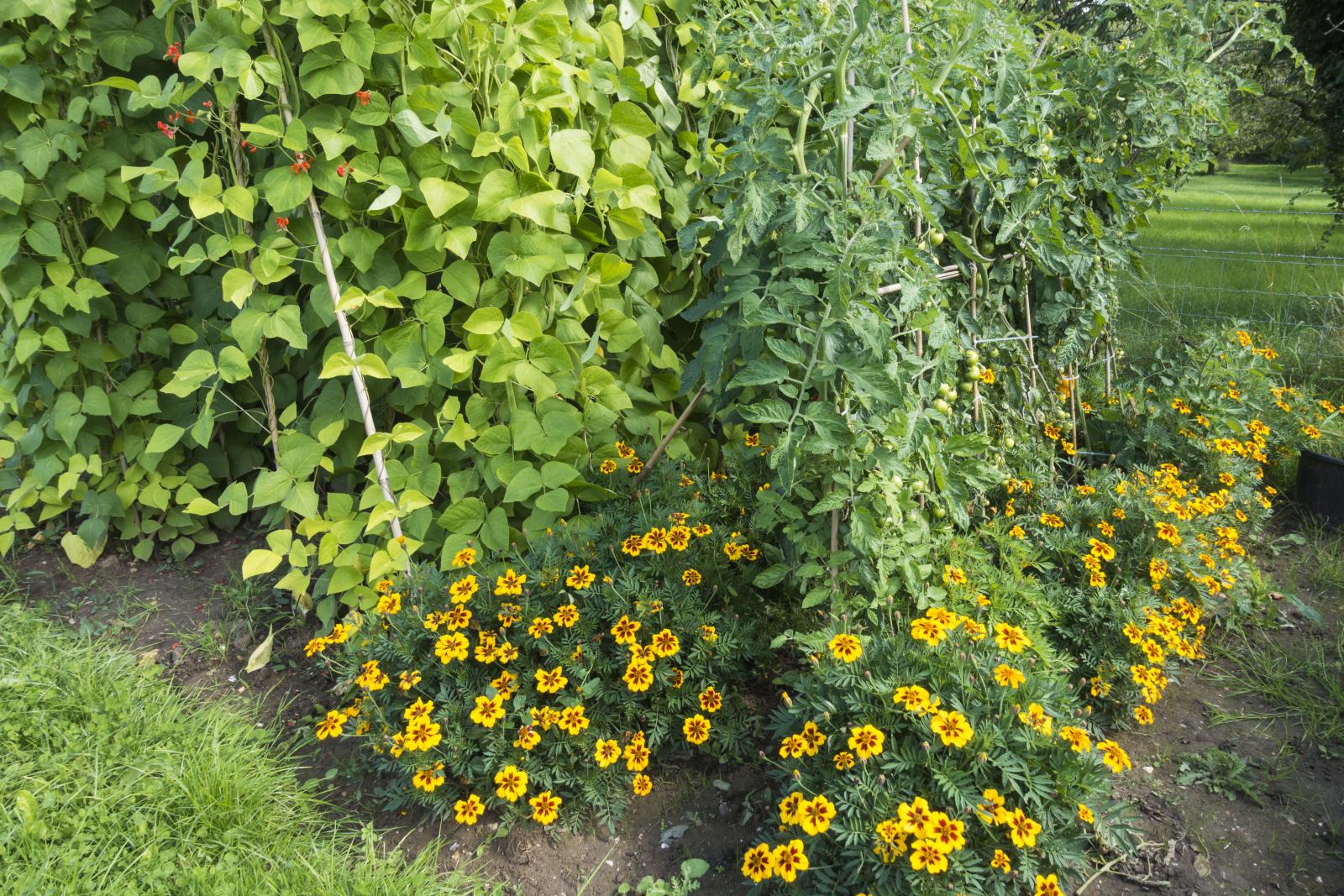Savory Companion Plants: The Ultimate Guide To Growing A Thriving Herb Garden
Savory Companion Plants: The Ultimate Guide to Growing a Thriving Herb Garden
Herb gardens are a great way to add flavor and fragrance to your home cooking. But did you know that you can also use companion planting to help your herbs grow healthier and more productive?
Companion planting is the practice of planting certain plants together in order to benefit each other. Some plants attract beneficial insects, while others deter pests. Some improve soil quality, while others help to improve the flavor of the plants around them.
If you're looking to grow a thriving herb garden, companion planting is a great way to do it. In this blog post, we'll discuss some of the best savory companion plants and how to plant them together.
What Are Savory Herbs?
Savory herbs are those that have a strong, pungent flavor. They are often used in cooking to add flavor to meats, vegetables, and sauces. Some common savory herbs include:
- Basil
- Chives
- Cilantro
- Dill
- Oregano
- Rosemary
- Sage
- Savory
- Thyme
Why Companion Plant Savory Herbs?
There are many reasons why you might want to companion plant savory herbs. Here are a few of the benefits:
- Attract beneficial insects. Many savory herbs attract beneficial insects, such as ladybugs, lacewings, and hoverflies. These insects help to control pests, such as aphids, spider mites, and whiteflies.
- Deter pests. Some savory herbs, such as rosemary and sage, have strong scents that can deter pests. This can help to keep your herbs healthy and pest-free.
- Improve soil quality. Some savory herbs, such as chives and garlic, help to improve soil quality by breaking down organic matter and adding nutrients. This can help your other herbs grow healthier and more productive.
- Improve flavor. Some savory herbs, such as basil and oregano, can actually improve the flavor of the plants around them. This is because they release volatile compounds that interact with the flavors of other plants.
How to Companion Plant Savory Herbs
When companion planting savory herbs, there are a few things to keep in mind:
- Plant herbs with similar needs. Make sure to plant herbs that have similar needs for sunlight, water, and soil type. This will help to ensure that all of your herbs thrive.
- Plant herbs that attract different beneficial insects. This will help to create a more balanced ecosystem in your garden.
- Plant herbs that deter different pests. This will help to keep your herbs healthy and pest-free.
- Plant herbs that improve soil quality. This will help to create a more nutrient-rich environment for all of your herbs.
- Plant herbs that improve flavor. This is a great way to add depth and complexity to your cooking.
Here are some specific companion planting combinations for savory herbs:
- Basil: Basil is a great companion plant for tomatoes, peppers, and eggplants. It helps to repel pests and improve the flavor of these vegetables.
- Chives: Chives are a good companion plant for carrots, beans, and strawberries. They help to repel pests and improve the flavor of these vegetables.
- Cilantro: Cilantro is a good companion plant for tomatoes, peppers, and cucumbers. It helps to repel pests and improve the flavor of these vegetables.
- Dill: Dill is a good companion plant for carrots, cucumbers, and squash. It helps to repel pests and improve the flavor of these vegetables.
- Oregano: Oregano is a good companion plant for tomatoes, peppers, and eggplants. It helps to repel pests and improve the flavor of these vegetables.
- Rosemary: Rosemary is a good companion plant for cabbage, broccoli, and cauliflower. It helps to repel pests and improve the flavor of these vegetables.
- Sage: Sage is a good companion plant for beans, tomatoes, and cucumbers. It helps to repel pests and improve the flavor of these vegetables.
- Thyme: Thyme is a good companion plant for carrots, tomatoes, and peppers. It helps to repel pests and improve the flavor of these vegetables.
Conclusion
Companion planting is a great way to help your herbs grow healthier and more productive. By planting savory herbs together, you can attract beneficial insects, deter pests, improve soil quality, and improve flavor. So next time you're planning your herb garden, be sure to consider companion planting.
Savory is a versatile herb that can be used in a variety of dishes, from soups and stews to roasted vegetables and grilled meats. It has a strong, savory flavor that can add depth and complexity to any meal.
When planting savory, it's important to consider its companion plants. Some good companions for savory include beans, melons, onions, garlic, and tomatoes. These plants can help to deter pests, attract beneficial insects, and improve the overall health of the savory plant.
For more information about savory companion plants, I recommend visiting Gardenia Inspiration. This website provides a comprehensive list of companion plants for a variety of herbs, including savory. You can also find helpful tips on how to plant and care for savory plants.
FAQ of savory companion plants
What are some good companion plants for savory?
Savory is a member of the mint family, and it does well when planted near other herbs in the same family, such as basil, oregano, and thyme. It also benefits from being planted near vegetables such as tomatoes, beans, and cabbage. These companion plants help to deter pests and diseases, and they can also improve the flavor of the savory.
How far apart should savory plants be planted?
Savory plants should be spaced about 12-18 inches apart. This will give them enough room to grow and spread.
How much sun does savory need?
Savory needs full sun to thrive. It will tolerate some light shade, but it will not produce as many leaves if it does not get enough sunlight.
How often should savory be watered?
Savory needs to be watered regularly, but it should not be allowed to sit in water. Water the plants deeply once a week, and then water them lightly as needed in between.
How do I harvest savory?
You can harvest savory leaves as needed. To do this, simply snip off the leaves from the top of the plant. You can also harvest the entire plant by cutting it back to the ground. Savory leaves can be used fresh or dried.
Image of savory companion plants
- Summer savory and tomatoes. Summer savory is a good companion plant for tomatoes because it helps to repel pests such as aphids and tomato hornworms. It also helps to improve the flavor of tomatoes.

- Summer savory and beans. Summer savory is also a good companion plant for beans. It helps to repel pests such as bean beetles and Mexican bean beetles. It also helps to improve the growth and yield of beans.

- Summer savory and onions. Summer savory is said to make onions sweeter when planted nearby. It also helps to repel pests such as onion maggots.

- Summer savory and garlic. Summer savory and garlic are both strong-flavored herbs that can help to repel pests such as mosquitoes and flies. They can also help to improve the flavor of each other.

- Summer savory and melons. Summer savory is a good companion plant for melons because it helps to repel pests such as cucumber beetles and squash bugs. It also helps to improve the flavor of melons.

Post a Comment for "Savory Companion Plants: The Ultimate Guide To Growing A Thriving Herb Garden"